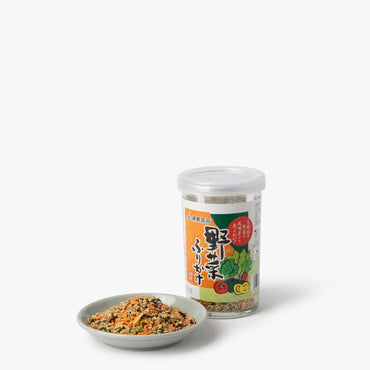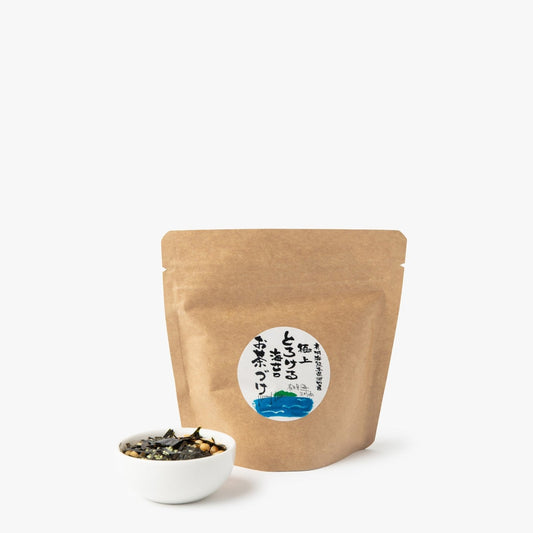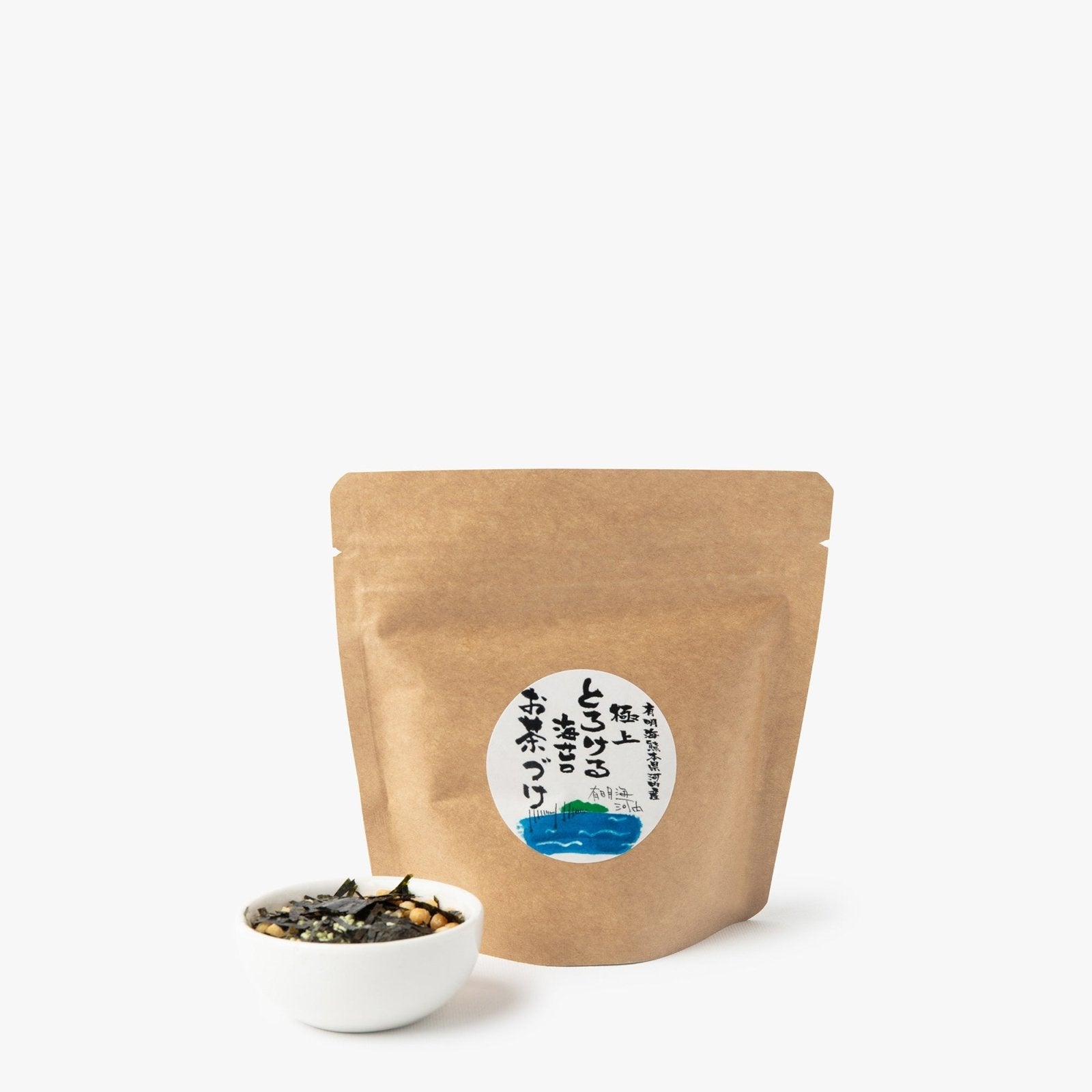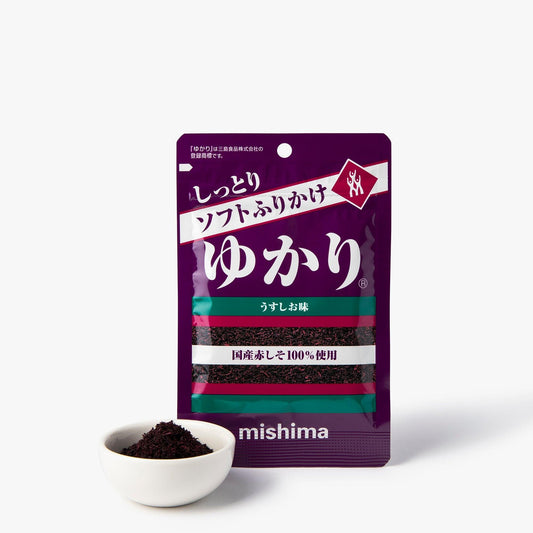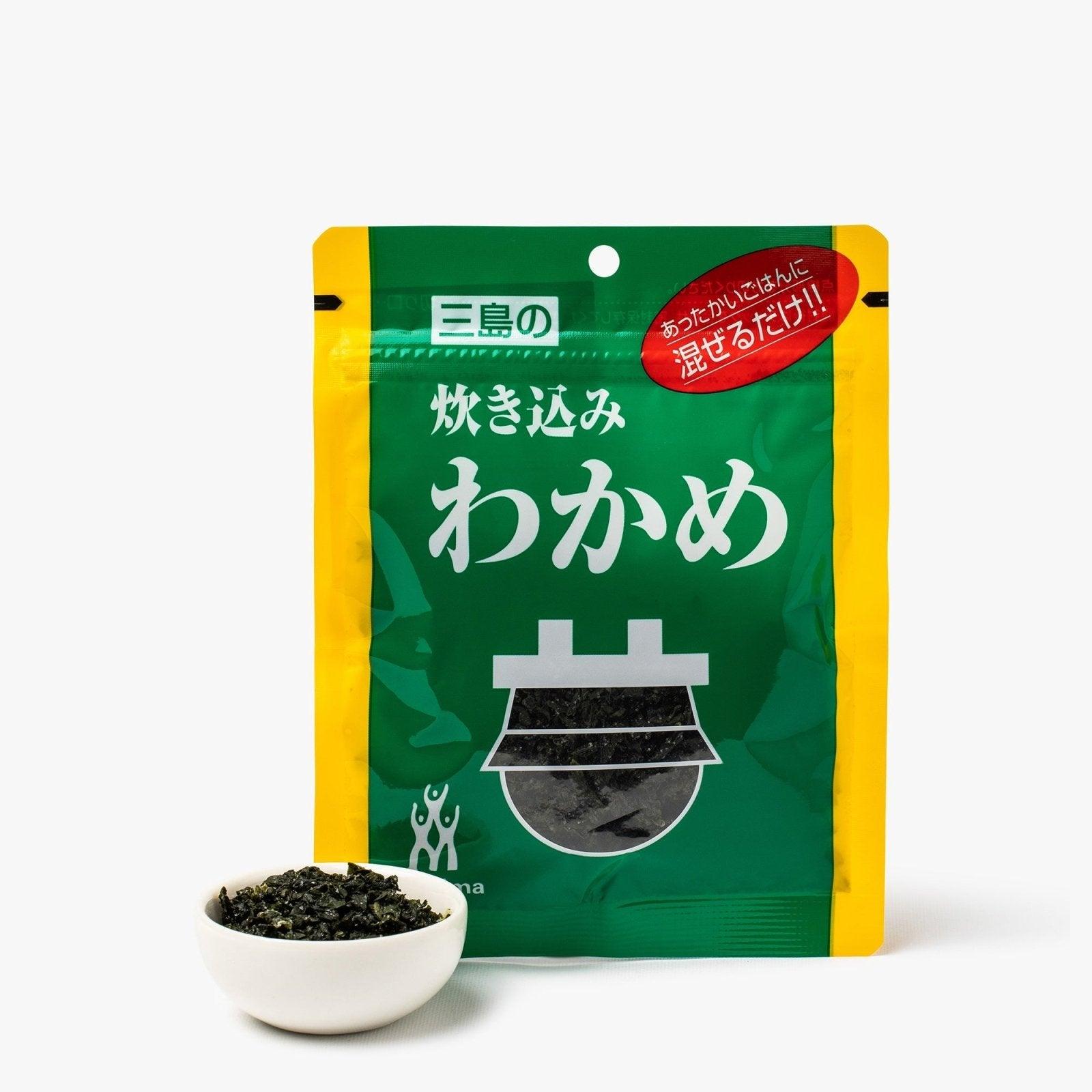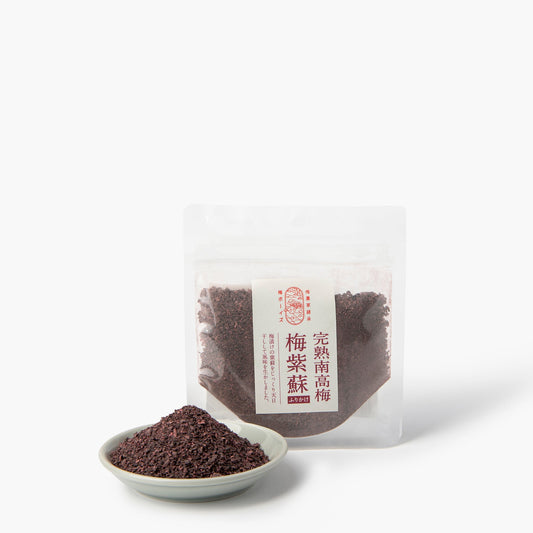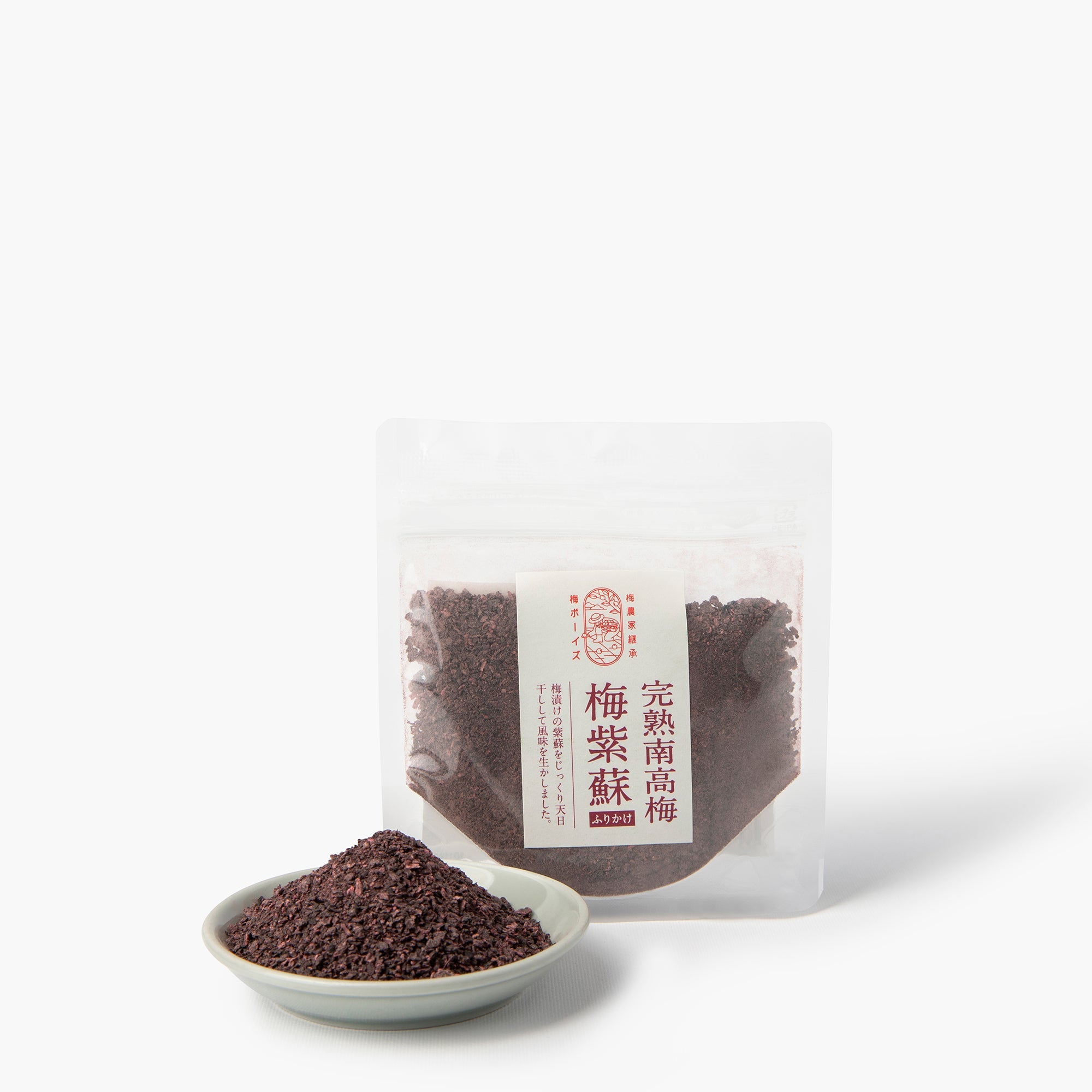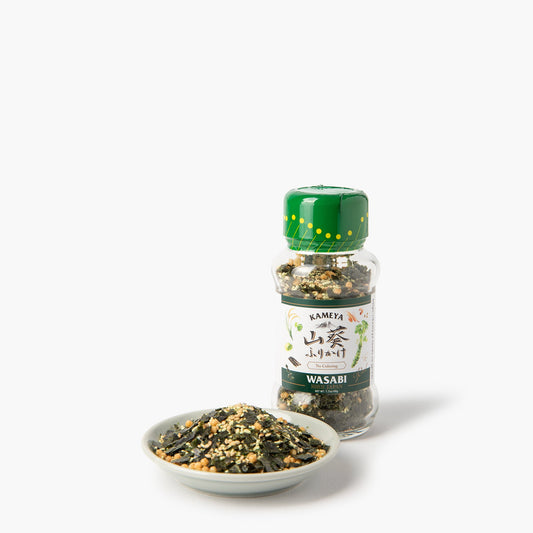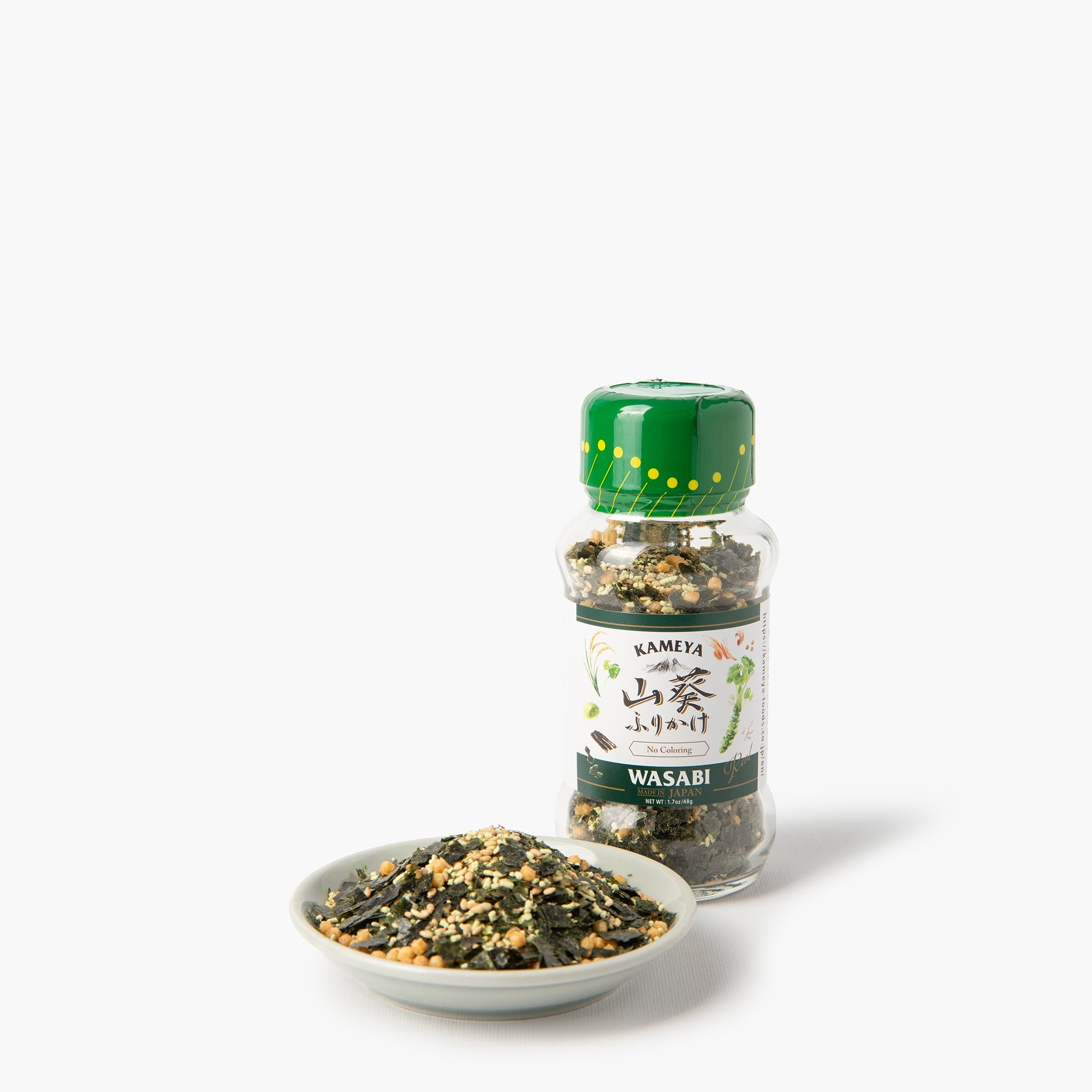Find out more about furikake and ochazuke
Where does furikake come from?
Furikake originated in Japan in the early 20ᵉ century. It was invented to enrich the diet with calcium, at a time when nutritional deficiencies were commonplace. Its creator, Suekichi Yoshimaru, mixed dried bonito, sesame and salt to create a tasty powder for sprinkling over rice.
Traditionally used as a convenient way to season Japanese dishes, furikake has evolved to include a variety of flavors such as nori, shiso, yuzu andume. This blend of seaweed, seeds and condiments has become a staple of Japanese cuisine, thanks to its umami touch incorporated into simple recipes such as rice, soups and salads.
Today, it's a product appreciated the world over for its ability to sublimate many dishes. There is a wide variety of blends depending on the ingredients, and consumers often seek advice to discover their favorite flavor.
How to use furikake
- On rice: The most common method is to sprinkle furikake directly onto a bowl of hot rice, bringing out the rich flavours of nori, sesame or bonito.
- In salads: Add it as a seasoning to give a Japanese touch to your vegetable orseaweed-based salads.
- For onigiri: Mix with rice to make tasty, colorful rice balls.
- In soups: A pinch of furikake can enhance the taste of miso soup or other broths.
- On cooked dishes: Use it to garnish scrambled eggs, grilled fish, or even noodle dishes like udon.
- With snacks: Sprinkle on French fries or popcorn for an original aperitif.
What is the shelf life after opening?
Shelf life after opening depends on the variety and ingredients, but generally it can be consumed within 3 to 6 months. It is important to check the use-by date indicated on the product packaging.
To preserve its freshness and taste, store in a dry place, away from heat and humidity. If furikake contains sensitive ingredients, such as dried fish (e.g. bonito), it is advisable to reseal the bag or transfer it to an airtight container after each use.
If in doubt, check for any changes in flavor or smell before using again.
How do you create your own furikake?
Creating your own furikake is simple, and allows you to adapt the flavors to your tastes! Here's a basic recipe for this delicious Japanese condiment:
Ingredients:
- Sesame seeds (2 tablespoons): add crunch and mild flavor.
- Nori (1 leaf): crumble this seaweed for a touch of umami.
- Salt (1 tsp.): to spice up the mixture.
- Dried bonito (1 tablespoon, optional): for a tasty, typically Japanese touch.
- Dried ume or shiso (optional): for a tangy or herbaceous touch.
- Other ideas: yuzu, dried fish, or crumbled umeboshi plums.
Preparation:
- Lightly toast the sesame seeds in a frying pan to intensify their aroma.
- Crumble the nori leaf and mix with the toasted seeds.
- Add salt and other ingredients as desired (e.g. bonito powder, yuzu zest orseaweed pieces).
- Mix well and store in an airtight container.
How is ochazuke prepared?
Ochazuke is a simple, comforting recipe from Japanese cuisine. Here's how to make it:
- Main ingredients: a bowl of hot cooked rice, furikake, grilled or raw fish (salmon, bonito) and vegetables or seaweed (such as nori).
- Adding tea or broth: Pour hot tea (sencha, genmaicha, hojicha) or dashi over the rice.
- Seasoning: Add salt, shiso, or a little soy sauce to taste.
- Toppings: Sprinkle with furikake or sesame seeds for extra flavour.
For more details, please visit our ochazuke recipe page !
What types of tea can be used to prepare ochazuke?
To prepare an ochazuke, several types of tea can be used, depending on your tastes and the desired result. The sencha is a classic choice for its balanced flavor, while genmaichawith its notes of puffed rice, adds a toasty dimension. The hojichawith its slightly smoky taste, is well suited to comforting dishes. You can also try yuzu blends or other flavour-enhancing variants. Make sure the tea complements ingredients such as furikake, fish or vegetables.
What's the difference between furikake and gomashio?
Furikake and gomashio are two Japanese seasonings used mainly to season rice, but they have some notable differences.
- Furikake is a mixture of various ingredients such as nori seaweed, sesame seeds, dried fish (bonito, sardine), eggs, salt and sometimes sugar or wasabi. There are many varieties of furikake, offering a wide range of flavors, from salty to slightly sweet or spicy.
- Gomashio, on the other hand, is a simpler seasoning, composed solely of toasted sesame seeds and salt. It is often used in macrobiotic cooking for its high mineral content and low sodium content compared to pure salt.
What's the difference between furikake and other Japanese seasonings such as shichimi togarashi?
- Furikake is a dry mixture intended mainly for sprinkling over rice. It's made from a variety of ingredients, including nori seaweed, sesame seeds, dried fish (bonito, sardine), eggs and wasabi. It adds a touch of umami flavor and crunch to dishes. There are many variations to suit individual tastes and preferences.
- Shichimi togarashi, or "seven-spice mix", is a spicy powder used to season dishes such as soups, udon noodles or grilled meats. It generally contains red pepper, sesame seeds, orange zest, nori, ginger and sometimes sancho (Japanese pepper). Unlike furikake, which enriches a dish with umami flavours, shichimi togarashi adds spiciness and heat.
What are the typical ingredients of furikake?
Furikake is a dry Japanese condiment sprinkled over rice. It is generally made from sesame seeds, nori seaweed, salt, sugar and sometimes dried fish (such as bonito). Depending on the variant, it may also contain eggs, shiso, dehydrated vegetables, wasabi or ume plum. Vegetarian and vegan recipes are also available, without fish or additives. Each blend offers a balance of umami flavor, crunch and iodine, perfect for spicing up your everyday dishes.
Is there a furikake without fish or bonito?
Yes, there are vegetarian and even vegan furikake, without fish or dried bonito. These versions use only sesame seeds, seaweed (nori or wakame), shiso, ume plum, dehydrated vegetables or yuzu to deliver a taste rich in umami, with no animal ingredients. It's an ideal alternative for accompanying rice, salads or noodles, while respecting a vegetarian or fish-free diet.
Which Japanese furikake do you recommend for beginners?
To get started with furikake, we recommend you start with the classic versions, which combine balance and mild flavors. Traditional black and white sesame furikake is an excellent choice, as it's easy to use, provides a nice crunch and delicate flavor. You can also opt for a furikake made with nori (seaweed), which offers a light iodized flavor and goes perfectly with rice or soups.
If you're looking for a more original touch, the furikake with shiso or plum ume can add a tangy, fragrant note that will enrich your dishes while remaining accessible to beginners.
























